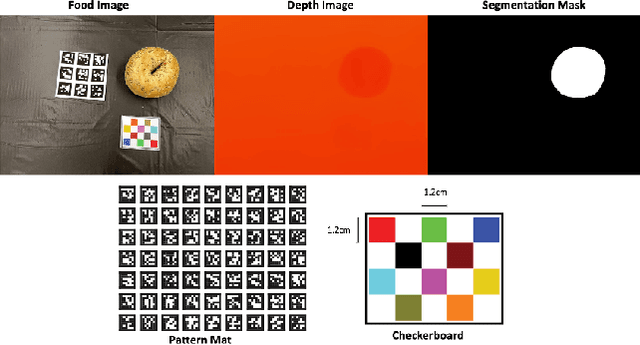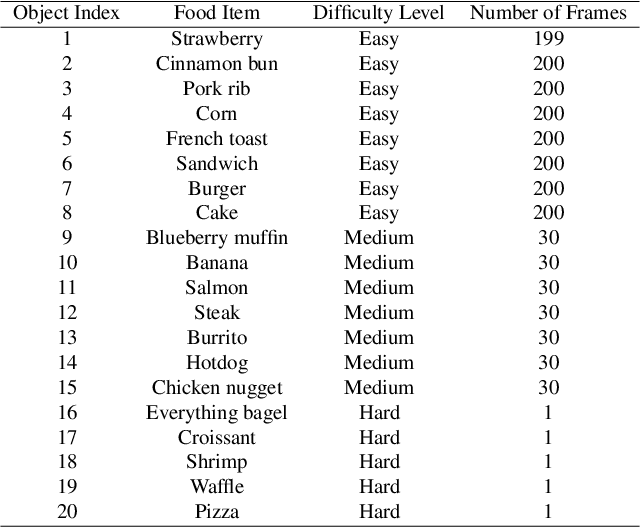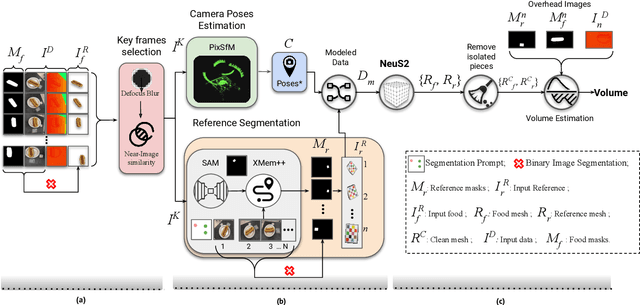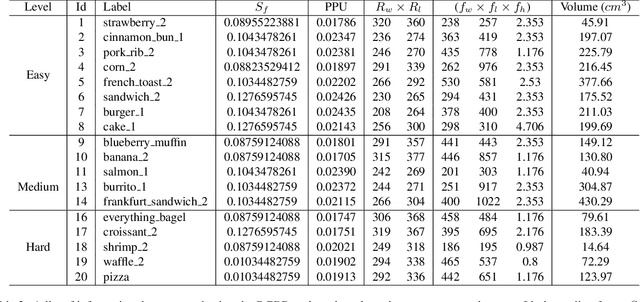Alexander Wong
DarwinAI, University of Waterloo
Starting Positions Matter: A Study on Better Weight Initialization for Neural Network Quantization
Jun 12, 2025Abstract:Deep neural network (DNN) quantization for fast, efficient inference has been an important tool in limiting the cost of machine learning (ML) model inference. Quantization-specific model development techniques such as regularization, quantization-aware training, and quantization-robustness penalties have served to greatly boost the accuracy and robustness of modern DNNs. However, very little exploration has been done on improving the initial conditions of DNN training for quantization. Just as random weight initialization has been shown to significantly impact test accuracy of floating point models, it would make sense that different weight initialization methods impact quantization robustness of trained models. We present an extensive study examining the effects of different weight initializations on a variety of CNN building blocks commonly used in efficient CNNs. This analysis reveals that even with varying CNN architectures, the choice of random weight initializer can significantly affect final quantization robustness. Next, we explore a new method for quantization-robust CNN initialization -- using Graph Hypernetworks (GHN) to predict parameters of quantized DNNs. Besides showing that GHN-predicted parameters are quantization-robust after regular float32 pretraining (of the GHN), we find that finetuning GHNs to predict parameters for quantized graphs (which we call GHN-QAT) can further improve quantized accuracy of CNNs. Notably, GHN-QAT shows significant accuracy improvements for even 4-bit quantization and better-than-random accuracy for 2-bits. To the best of our knowledge, this is the first in-depth study on quantization-aware DNN weight initialization. GHN-QAT offers a novel approach to quantized DNN model design. Future investigations, such as using GHN-QAT-initialized parameters for quantization-aware training, can further streamline the DNN quantization process.
The Efficacy of Semantics-Preserving Transformations in Self-Supervised Learning for Medical Ultrasound
Apr 10, 2025Abstract:Data augmentation is a central component of joint embedding self-supervised learning (SSL). Approaches that work for natural images may not always be effective in medical imaging tasks. This study systematically investigated the impact of data augmentation and preprocessing strategies in SSL for lung ultrasound. Three data augmentation pipelines were assessed: (1) a baseline pipeline commonly used across imaging domains, (2) a novel semantic-preserving pipeline designed for ultrasound, and (3) a distilled set of the most effective transformations from both pipelines. Pretrained models were evaluated on multiple classification tasks: B-line detection, pleural effusion detection, and COVID-19 classification. Experiments revealed that semantics-preserving data augmentation resulted in the greatest performance for COVID-19 classification - a diagnostic task requiring global image context. Cropping-based methods yielded the greatest performance on the B-line and pleural effusion object classification tasks, which require strong local pattern recognition. Lastly, semantics-preserving ultrasound image preprocessing resulted in increased downstream performance for multiple tasks. Guidance regarding data augmentation and preprocessing strategies was synthesized for practitioners working with SSL in ultrasound.
SAMJAM: Zero-Shot Video Scene Graph Generation for Egocentric Kitchen Videos
Apr 10, 2025Abstract:Video Scene Graph Generation (VidSGG) is an important topic in understanding dynamic kitchen environments. Current models for VidSGG require extensive training to produce scene graphs. Recently, Vision Language Models (VLM) and Vision Foundation Models (VFM) have demonstrated impressive zero-shot capabilities in a variety of tasks. However, VLMs like Gemini struggle with the dynamics for VidSGG, failing to maintain stable object identities across frames. To overcome this limitation, we propose SAMJAM, a zero-shot pipeline that combines SAM2's temporal tracking with Gemini's semantic understanding. SAM2 also improves upon Gemini's object grounding by producing more accurate bounding boxes. In our method, we first prompt Gemini to generate a frame-level scene graph. Then, we employ a matching algorithm to map each object in the scene graph with a SAM2-generated or SAM2-propagated mask, producing a temporally-consistent scene graph in dynamic environments. Finally, we repeat this process again in each of the following frames. We empirically demonstrate that SAMJAM outperforms Gemini by 8.33% in mean recall on the EPIC-KITCHENS and EPIC-KITCHENS-100 datasets.
LangDA: Building Context-Awareness via Language for Domain Adaptive Semantic Segmentation
Mar 17, 2025Abstract:Unsupervised domain adaptation for semantic segmentation (DASS) aims to transfer knowledge from a label-rich source domain to a target domain with no labels. Two key approaches in DASS are (1) vision-only approaches using masking or multi-resolution crops, and (2) language-based approaches that use generic class-wise prompts informed by target domain (e.g. "a {snowy} photo of a {class}"). However, the former is susceptible to noisy pseudo-labels that are biased to the source domain. The latter does not fully capture the intricate spatial relationships of objects -- key for dense prediction tasks. To this end, we propose LangDA. LangDA addresses these challenges by, first, learning contextual relationships between objects via VLM-generated scene descriptions (e.g. "a pedestrian is on the sidewalk, and the street is lined with buildings."). Second, LangDA aligns the entire image features with text representation of this context-aware scene caption and learns generalized representations via text. With this, LangDA sets the new state-of-the-art across three DASS benchmarks, outperforming existing methods by 2.6%, 1.4% and 3.9%.
Cancer-Net PCa-Seg: Benchmarking Deep Learning Models for Prostate Cancer Segmentation Using Synthetic Correlated Diffusion Imaging
Jan 15, 2025


Abstract:Prostate cancer (PCa) is the most prevalent cancer among men in the United States, accounting for nearly 300,000 cases, 29% of all diagnoses and 35,000 total deaths in 2024. Traditional screening methods such as prostate-specific antigen (PSA) testing and magnetic resonance imaging (MRI) have been pivotal in diagnosis, but have faced limitations in specificity and generalizability. In this paper, we explore the potential of enhancing PCa lesion segmentation using a novel MRI modality called synthetic correlated diffusion imaging (CDI$^s$). We employ several state-of-the-art deep learning models, including U-Net, SegResNet, Swin UNETR, Attention U-Net, and LightM-UNet, to segment PCa lesions from a 200 CDI$^s$ patient cohort. We find that SegResNet achieved superior segmentation performance with a Dice-Sorensen coefficient (DSC) of $76.68 \pm 0.8$. Notably, the Attention U-Net, while slightly less accurate (DSC $74.82 \pm 2.0$), offered a favorable balance between accuracy and computational efficiency. Our findings demonstrate the potential of deep learning models in improving PCa lesion segmentation using CDI$^s$ to enhance PCa management and clinical support.
Cancer-Net SCa-Synth: An Open Access Synthetically Generated 2D Skin Lesion Dataset for Skin Cancer Classification
Nov 08, 2024



Abstract:In the United States, skin cancer ranks as the most commonly diagnosed cancer, presenting a significant public health issue due to its high rates of occurrence and the risk of serious complications if not caught early. Recent advancements in dataset curation and deep learning have shown promise in quick and accurate detection of skin cancer. However, current open-source datasets have significant class imbalances which impedes the effectiveness of these deep learning models. In healthcare, generative artificial intelligence (AI) models have been employed to create synthetic data, addressing data imbalance in datasets by augmenting underrepresented classes and enhancing the overall quality and performance of machine learning models. In this paper, we build on top of previous work by leveraging new advancements in generative AI, notably Stable Diffusion and DreamBooth. We introduce Cancer-Net SCa-Synth, an open access synthetically generated 2D skin lesion dataset for skin cancer classification. Further analysis on the data effectiveness by comparing the ISIC 2020 test set performance for training with and without these synthetic images for a simple model highlights the benefits of leveraging synthetic data to improve performance. Cancer-Net SCa-Synth is publicly available at https://github.com/catai9/Cancer-Net-SCa-Synth as part of a global open-source initiative for accelerating machine learning for cancer care.
Enhancing Trust in Clinically Significant Prostate Cancer Prediction with Multiple Magnetic Resonance Imaging Modalities
Nov 07, 2024Abstract:In the United States, prostate cancer is the second leading cause of deaths in males with a predicted 35,250 deaths in 2024. However, most diagnoses are non-lethal and deemed clinically insignificant which means that the patient will likely not be impacted by the cancer over their lifetime. As a result, numerous research studies have explored the accuracy of predicting clinical significance of prostate cancer based on magnetic resonance imaging (MRI) modalities and deep neural networks. Despite their high performance, these models are not trusted by most clinical scientists as they are trained solely on a single modality whereas clinical scientists often use multiple magnetic resonance imaging modalities during their diagnosis. In this paper, we investigate combining multiple MRI modalities to train a deep learning model to enhance trust in the models for clinically significant prostate cancer prediction. The promising performance and proposed training pipeline showcase the benefits of incorporating multiple MRI modalities for enhanced trust and accuracy.
Decoding Diffusion: A Scalable Framework for Unsupervised Analysis of Latent Space Biases and Representations Using Natural Language Prompts
Oct 25, 2024Abstract:Recent advances in image generation have made diffusion models powerful tools for creating high-quality images. However, their iterative denoising process makes understanding and interpreting their semantic latent spaces more challenging than other generative models, such as GANs. Recent methods have attempted to address this issue by identifying semantically meaningful directions within the latent space. However, they often need manual interpretation or are limited in the number of vectors that can be trained, restricting their scope and utility. This paper proposes a novel framework for unsupervised exploration of diffusion latent spaces. We directly leverage natural language prompts and image captions to map latent directions. This method allows for the automatic understanding of hidden features and supports a broader range of analysis without the need to train specific vectors. Our method provides a more scalable and interpretable understanding of the semantic knowledge encoded within diffusion models, facilitating comprehensive analysis of latent biases and the nuanced representations these models learn. Experimental results show that our framework can uncover hidden patterns and associations in various domains, offering new insights into the interpretability of diffusion model latent spaces.
MetaFood3D: Large 3D Food Object Dataset with Nutrition Values
Sep 03, 2024Abstract:Food computing is both important and challenging in computer vision (CV). It significantly contributes to the development of CV algorithms due to its frequent presence in datasets across various applications, ranging from classification and instance segmentation to 3D reconstruction. The polymorphic shapes and textures of food, coupled with high variation in forms and vast multimodal information, including language descriptions and nutritional data, make food computing a complex and demanding task for modern CV algorithms. 3D food modeling is a new frontier for addressing food-related problems, due to its inherent capability to deal with random camera views and its straightforward representation for calculating food portion size. However, the primary hurdle in the development of algorithms for food object analysis is the lack of nutrition values in existing 3D datasets. Moreover, in the broader field of 3D research, there is a critical need for domain-specific test datasets. To bridge the gap between general 3D vision and food computing research, we propose MetaFood3D. This dataset consists of 637 meticulously labeled 3D food objects across 108 categories, featuring detailed nutrition information, weight, and food codes linked to a comprehensive nutrition database. The dataset emphasizes intra-class diversity and includes rich modalities such as textured mesh files, RGB-D videos, and segmentation masks. Experimental results demonstrate our dataset's significant potential for improving algorithm performance, highlight the challenging gap between video captures and 3D scanned data, and show the strength of the MetaFood3D dataset in high-quality data generation, simulation, and augmentation.
MetaFood CVPR 2024 Challenge on Physically Informed 3D Food Reconstruction: Methods and Results
Jul 12, 2024



Abstract:The increasing interest in computer vision applications for nutrition and dietary monitoring has led to the development of advanced 3D reconstruction techniques for food items. However, the scarcity of high-quality data and limited collaboration between industry and academia have constrained progress in this field. Building on recent advancements in 3D reconstruction, we host the MetaFood Workshop and its challenge for Physically Informed 3D Food Reconstruction. This challenge focuses on reconstructing volume-accurate 3D models of food items from 2D images, using a visible checkerboard as a size reference. Participants were tasked with reconstructing 3D models for 20 selected food items of varying difficulty levels: easy, medium, and hard. The easy level provides 200 images, the medium level provides 30 images, and the hard level provides only 1 image for reconstruction. In total, 16 teams submitted results in the final testing phase. The solutions developed in this challenge achieved promising results in 3D food reconstruction, with significant potential for improving portion estimation for dietary assessment and nutritional monitoring. More details about this workshop challenge and access to the dataset can be found at https://sites.google.com/view/cvpr-metafood-2024.
 Add to Chrome
Add to Chrome Add to Firefox
Add to Firefox Add to Edge
Add to Edge